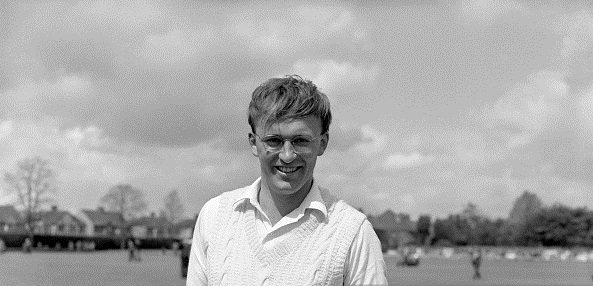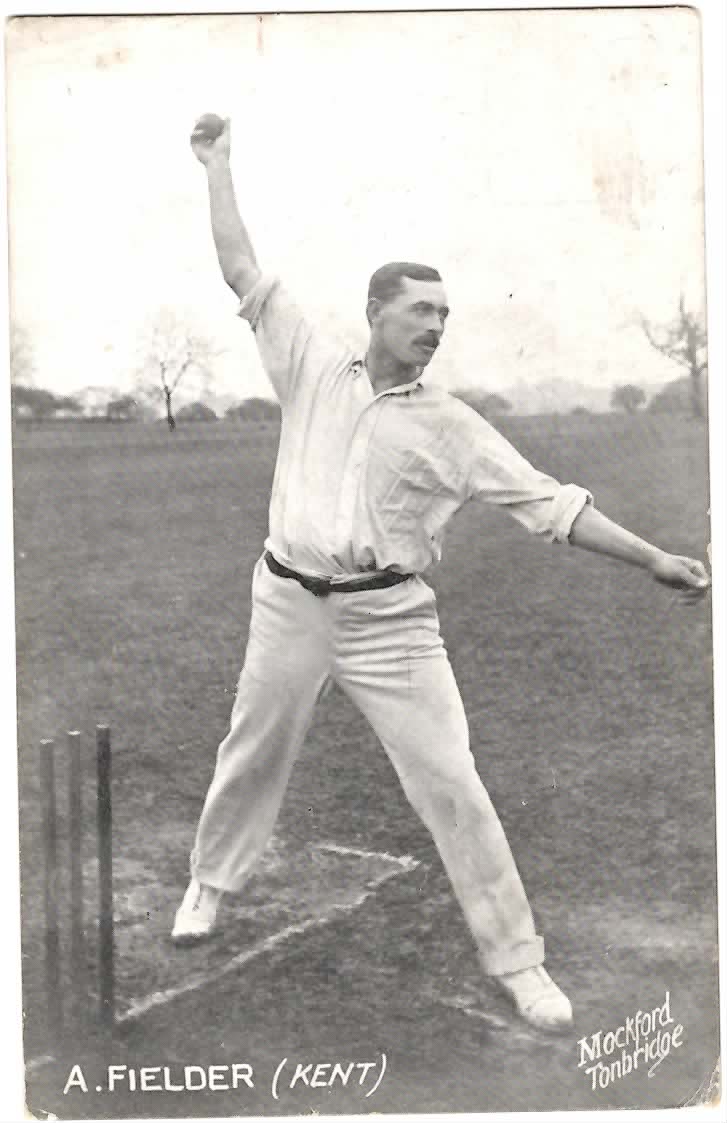We have recently had a few donations to the club’s archive, each of which has added to our knowledge of some half forgotten moments of Kent’s past.
The family of the late David Sayer have donated several items relating to David’s career, which was unique in one way – he is, as far as we can gather, the only man to have taken a first-class hat-trick for and against the same team, in his case Kent. He achieved this bizarre feat by taking a hat-trick for Oxford University against Kent in 1958 and then for Kent against Glamorgan in 1964. The game in which he took his hat-trick for Oxford University was remarkable in another way too. Fred Ridgway was one of Sayer’s hat-trick victims, but later that same day Ridgway took a hat-trick of his own against the university. Two hat-tricks on one day of a first-class match is rare enough, but for one to be by a victim of the other hat-trick must surely be unique. Annoyingly, Sayer was not one of Ridgway’s hat-trick victims, or else the circle would have been complete.

David Sayer
Going further back in time, we had a letter from the daughter of the former South Australian opening batsman of the 1920s, Gordon Harris (no relation of the Kentish Lord). She was writing from Hackham, South Australia, which is in the wine country south of Adelaide, and she enclosed a photograph, which certainly we have never seen before, of Frank Woolley batting in the nets. We are unsure where it was taken, whether in Adelaide or in England, but it is a fine action photograph, with Woolley’s bat blurred as it comes down on the ball. However, her letter also gives an unusual insight into life in Canterbury in 1953, that extremely wet summer when England won back the Ashes after nineteen years.
“I was 21. My girlfriend and I had hitchhiked to Canterbury to see the Australians play and when walking past the ground in the early evening saw a ladder propped up against the wall. Being adventurous we climbed it and decided to sleep on the floor of the Press Box.” Luckily, Jim Swanton was not there to have an apoplectic fit. “We settled in the Kentish Gazette section and found that hard boards were not conducive to sleep.” The next morning presented a problem for the women. “Someone must have alerted the Secretary as Mr. Christopherson marched up the stairs towards us as we shut our eyes and stayed on the floor. He said, ‘I suppose you want to know where the toilet is now!’
Security is rather tighter these days, and I would be pretty sure that nobody would leave a ladder up against the wall of the ground, nor that the Press Box would be unlocked overnight. Still those were different days. Mr. Christopherson allowed the two ladies to leave the ground and they later paid their way to come back in to watch the game. But their Australian chutzpah did not end there. “That night we asked at the police station if they would lock us up. They did, and brought tea in the morning.”
Another communication is from Donald Archer, now living in Somerset but whose parents were both born and bred in Gravesend, and who loved their cricket. His father suffered a stroke in 1949 and was admitted to St. Thomas’ Hospital. The name over the bed next door to him was ‘Fielder’, to which Mr. Archer asked, “Not the Fielder?” “My mother said she didn’t know who was more delighted, Arthur Fielder at being recognised or my father at meeting one of his childhood heroes. When she took us to visit Dad in hospital, he sent us to the bed next to him so that Mr. Fielder could show us with an orange how to grip the cricket ball when you were bowling.” They also took in their father’s autograph book so that Arthur Fielder could sign it again, as he had done once before in his playing days when Mr. Archer was a boy. Fielder died just a few days later, in St. Thomas’s Hospital, aged 72.
 It is always exciting to receive items of memorabilia relating to past players, but it is even more interesting to hear the stories that go with them. Let’s hope there are many more in the future.
It is always exciting to receive items of memorabilia relating to past players, but it is even more interesting to hear the stories that go with them. Let’s hope there are many more in the future.
0 Comments